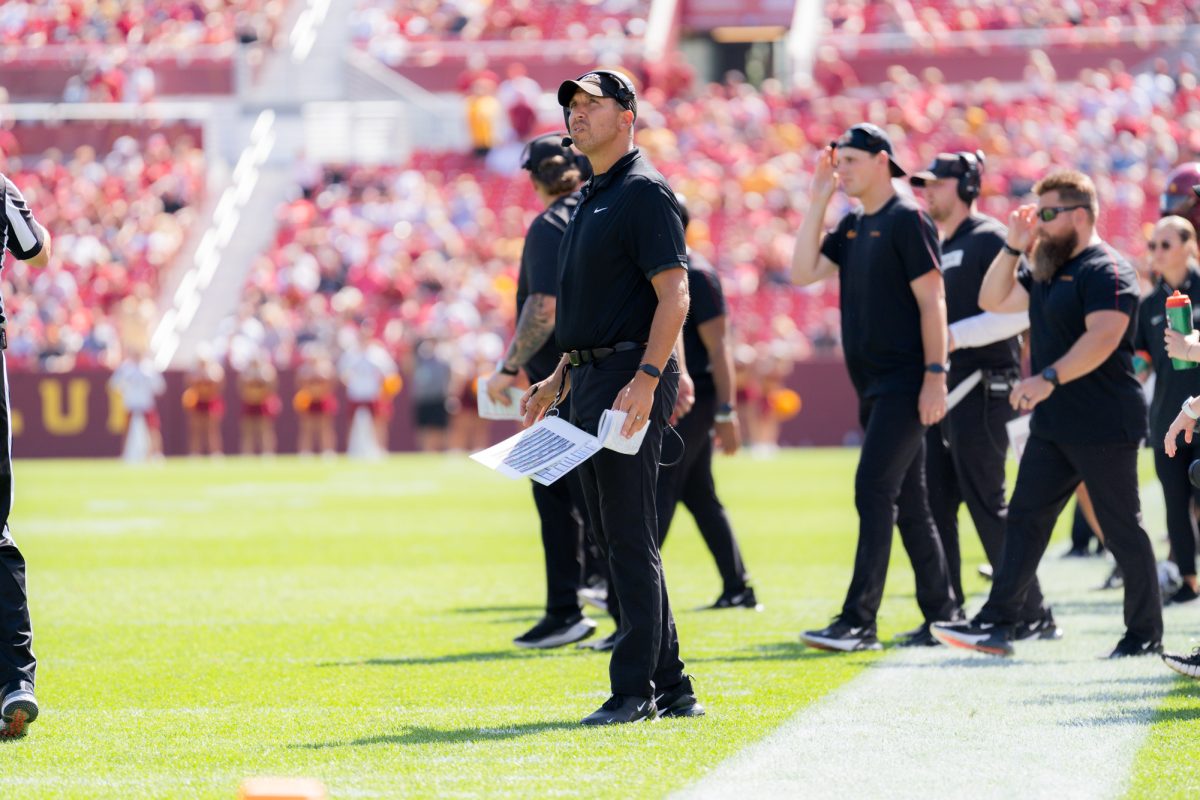Air Force cadets set sky-high precedent
April 3, 2000
Ever since she can remember, Cate Flynn has wanted to be a pilot.
“I knew from the moment I could walk,” said Flynn, senior in management information systems and psychology. “I used to plaster my face against the window at O’Hare [Airport].”
Flynn is the first female to be selected for pilot status at Iowa State for at least the past three years. She’s also one of seven cadets from Iowa State’s Air Force ROTC program who has been selected for the positions of pilot or navigator.
This could be the largest number of cadets ever selected for either position from one graduating class, said Air Force Col. Ken Schindele, professor and chairman of air force aerospace studies.
The selection process for pilot or navigator is competitive, Schindele said. To be in what he called a “rated position” is an honor for members of the Air Force.
These cadets will be a part of an elite group who wear wings in the Air Force.
“It speaks to the quality of our corps and of ISU,” Schindele said.
The following cadets were selected to be pilots: Flynn, Joel Soukup, senior in aerospace engineering, Cory Damon, senior in electrical engineering, and Jason Whitford, senior in mechanical engineering.
The following were selected to be navigators: Bryan Rogers, junior in political science, Timothy Scott Biggs, junior in French, and Andy Snyder, senior in history.
Soukup, the youngest of nine, said he will be the first to become an officer in his immediate family. He has a brother who is currently on active duty in the Army.
Soukup also knew from a young age that he wanted to be a pilot.
“I knew when I took my first plane ride at the age of 5 or 6,” he said.
Students are usually selected their junior year. Applicants must have at least one year remaining in their degree program upon selection.
The cadets filed their paperwork in November, and the positions were announced at the end of March.
Cadets must meet a variety of standards to qualify for both positions, Schindele said. Pilots must take the Basic Aptitude Test for Flying. Candidates for both positions must pass physical fitness standards.
The minimum GPA is 3.19 for pilots and 2.81 for navigators. Candidates must also receive recommendations from ROTC leadership and score high on the Air Force Officer Qualifying Test, which is similar to the ACT or SAT.
Students must have a minimum of two years with the ROTC program to be eligible for either status, said Air Force Capt. Todd Bergman, adjunct instructor of air force aerospace studies. Students in either undergraduate or graduate programs can qualify.
Selection to pilot status requires a 10-year commitment to the Air Force upon completion of training. Navigators are required to commit to six years with the Air Force upon completion of training.






